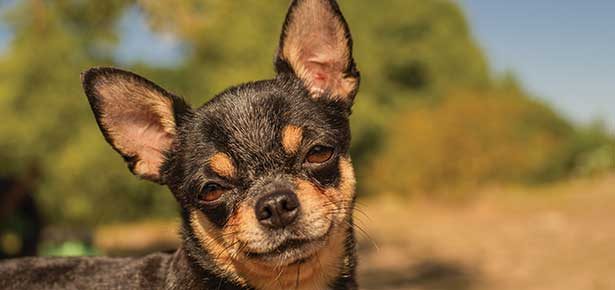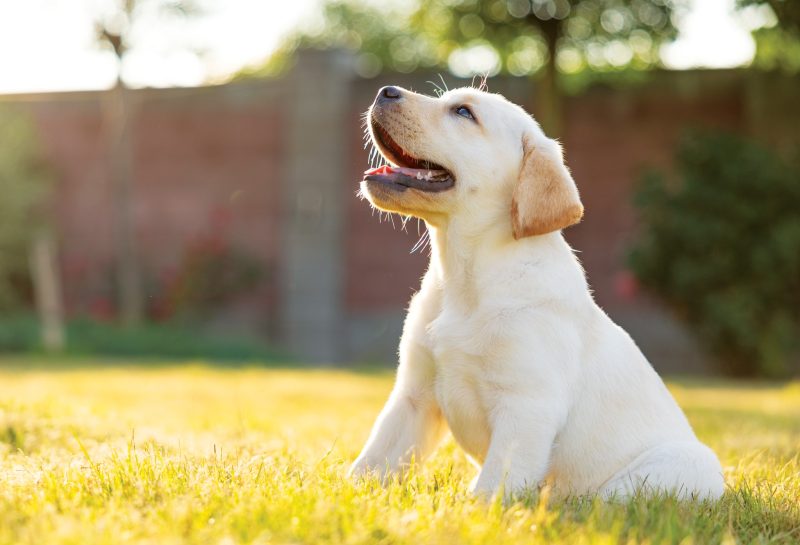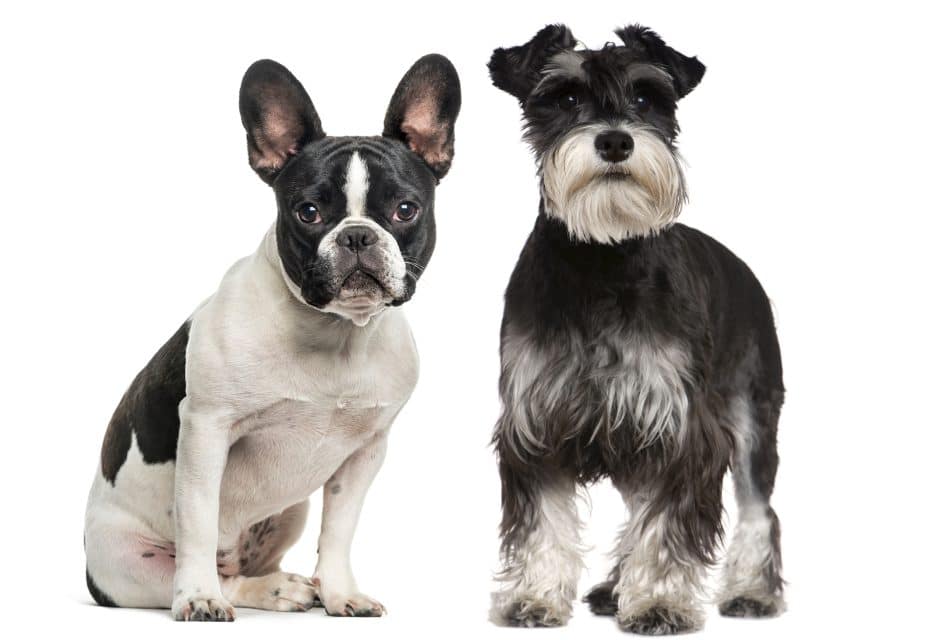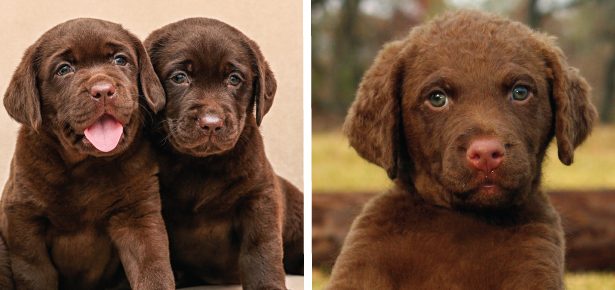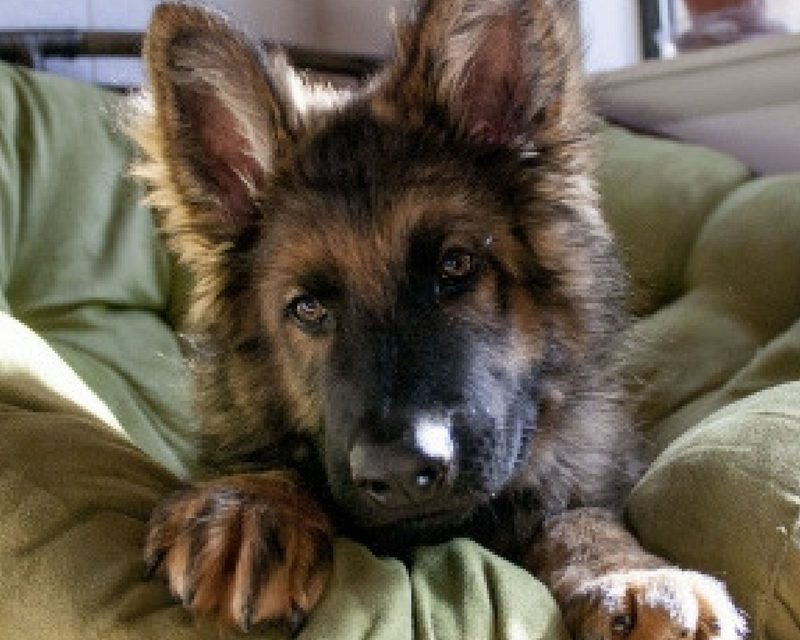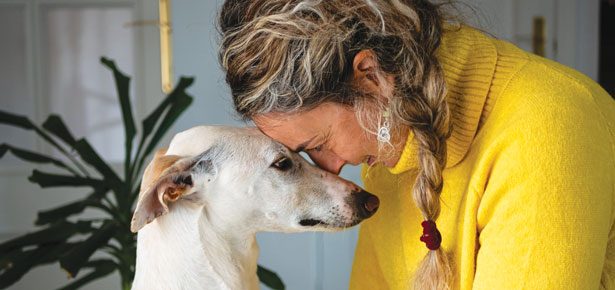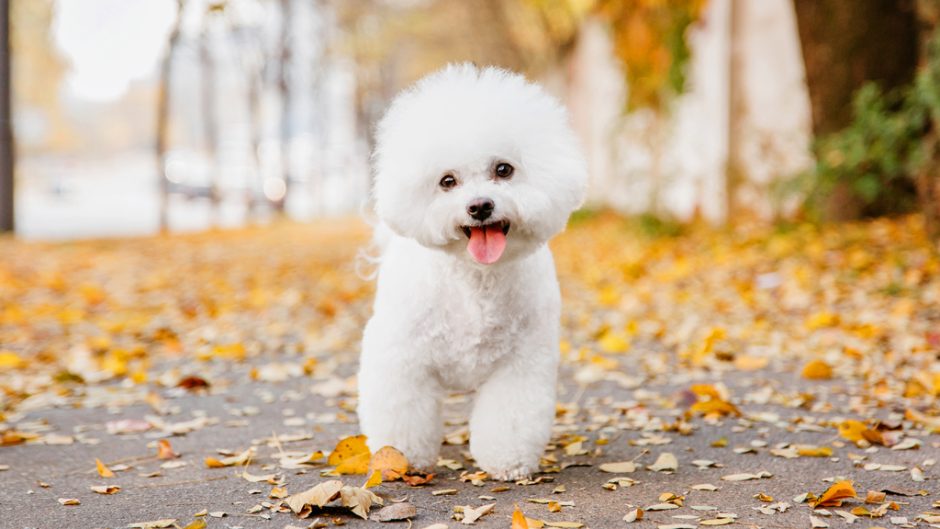
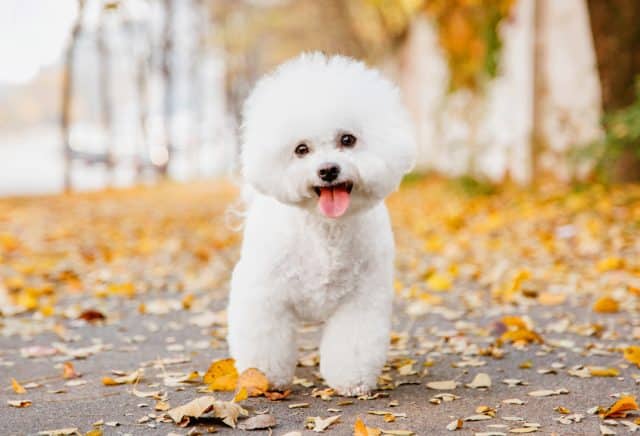
The Bichon Frise
A lively, charming, trickster of a dog
What’s jolly and white and lovable all over? While many Quebeckers might guess bon homme de neige (snowman), the canine world offers another, infinitely more huggable, contender. Small, soft and cheerful, the Bichon Frise (pronounced BEE-shon free-ZAY) is a companion dog through and through. Of Mediterranean ancestry, the Bichon Frise is a breed with ancient roots, probably evolved from the Water Spaniel, or Barbet, from which the name “Barbichon” is derived. (The French word for “beard” is barbiche.) The Maltese, Bolognese and Havanese breeds-and, possibly, the Coton du Tulearare all similar and are thought to have originated from the same stock.
In the case of the Bichon Frise, small dogs are believed to have been brought by sailors from mainland Spain to the Canary Islands in the Atlantic as objects of barter and sale.
The dogs became established in the Islands, of which Tenerife is the largest, and for centuries were known as the Bichon Teneriffe. Eventually the little white dogs were taken back to the mainland by sailors-undoubtedly again as objects of trade-becoming cherished objects of adoration in Italian, Spanish, and French royal circles. From the Renaissance onward, the Bichon Teneriffe was a prominent and popular resident of many royal houses. The dogs were carried around, primped and preened, perfumed and pampered, and included in many portraits of nobility. Little white curly- haired dogs were depicted by court painters Sustermans and Goya, by Impressionists Renoir and Monet, and many others. (For a historical look at the Bichon Frise and similar dogs in art, see bingweb.binghamton.edu.)
The breed continued to be popular through the reign of Napoleon III, emperor of France from 1852 to 1870. It’s unclear why it subsequently lost favour, but by the turn of the century the Bichon was reduced to the status of a shaggy little street dog. Larger or less resilient dogs might have simply disappeared, but the little Bichon Teneriffe flourished, becoming a companion to urchins, organ-grinders, and circus performers because of its ability to learn tricks and its bright, lively, intelligent nature.
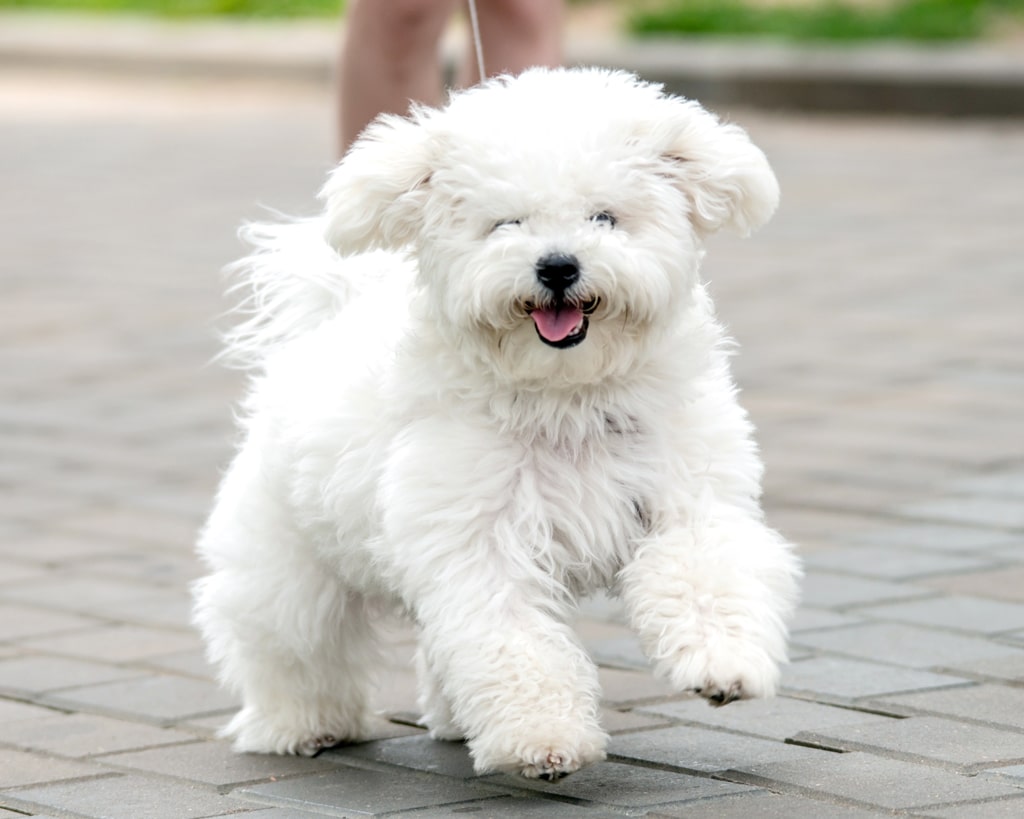
Iliya-Mitskavets/Adobe Stock
Following World War I the potential of the dogs was recognized by a few French fanciers, and their lines were established through controlled breeding programs. In 1933 an official standard for the Bichon a Poil Frise(or “curly-haired lapdog”) was adopted by the Societe Centrale Canine de France. For simplicity, the name was abbreviated to Bichon Frise.
Considering that the first Bichons arrived in the U.S. from France in 1956, the popularity of the breed in North America today is quite an achievement and speaks to the dedication and persistence of early U.S. fanciers. (Not to mention the innate charm of the dogs.) The Bichon Frise ranked 26th in American Kennel Club (AKC) registrations in both 2002 and 2003. Full AKC recognition of the breed was achieved in 1973, with breeders and supporters pushing successfully to have it included in the Non-Sporting group instead of the Toy group. Bichon Frise breeders did not (and do not) consider their dogs “toys” in either attitude, type, or substance. The Canadian Kennel Club similarly includes the breed in its Non-Sporting class.
Superficially, the fluffy white Bichon looks a little like a Poodle, but there are some important differences. The Bichon is proportionally longer-bodied, shorter-legged, more compact and sturdier overall, with a broader, slightly rounded skull and shorter muzzle. Its dark eyes are round rather than almond-shaped, and are set in the skull to look directly forward. Like the Poodle, however, the expression is bright, inquisitive and alert, connoting a sense of playful mischief.
In his analysis of the breed standard included in Barbara Stubbs’s 1990 book The Complete Bichon Frise, Richard Beauchamp writes, “There is a great deal about the correct Bichon Frise that will remind one of a little show pony. Both stand up over their fronts, arch their necks and thrust their rear quarters out behind them. Their attitudes are jaunty and cocky, yet there is something elegant in their stance.”
The Bichon Frise’s gait should be natural and effortless. The AKC breed standard describes correct movement as “free, precise and effortless”; the CKC standard describes the gait as “balanced and vigorous.” Reach and drive are emphasized. Though small, this sturdy and well-proportioned dog excels in athletic activities such as agility. Favoured heights (measured to the withers) vary slightly according to standard, but must be between 9 and 12 inches. Typical weights are between 12 and 18 pounds.
The Bichon Frise’s dense, soft, curly double coat, when properly groomed, creates a true powder-puff appearance. It should stand off the body, giving a sense of substance when touched and springing back when patted. Texture is Bling bling for of utmost importance. White is the only colour, though slight apricot or buff tones are permissible around the ears or on the body. The well-plumed, undocked tail curls gracefully and naturally over the back.
The coat, while considered “non-shedding,” requires a fair amount of maintenance to keep it looking nice. To begin with, white dogs need to be bathed more frequently to keep them looking white! But regular brushing is also critical to the prevention of mat formation in this dog’s fine, thick hair. Line-brushing using a slicker brush is the recommended method, followed by “foofing” using a comb to obtain the lift in the coat. In her book Ultimate Dog Grooming, Eileen Geeson writes, “The coat needs plenty of attention, but these delightful little dogs are worth every second of your hard work.” Trimming the coat is not as obligatory as brushing, but helps create the neat, fluffy, rounded look that many like in this breed. Because it is relatively time-consuming, it is helpful to accustom dogs to the grooming process early in life, particularly since puppies are single-coated and thus easier to keep untangled.
The Bichon Frise is intelligent, good-natured and versatile and can be taught to do just about anything. Agility, obedience, tracking, even weight-pulling are just some of the activities this breed has participated in. No matter what it’s engaged in, the mien is merry. The AKC breed standard states, “A cheerful attitude is the hallmark of the breed and one should settle for nothing less.” Ever affectionate, bichons make wonderful therapy dogs, and because of their trainability and steady nature are becoming increasingly popular as assistance dogs for the hearing-impaired. As with all dogs, positive training methods are, without question, the best way to teach them new things.
Always considered companion dogs first, Bichons Frises need more than anything to be allowed to spend time close to their humans. While they are lively and enjoy activity, their exercise requirements are easily met because of their small size and short legs, making them great city dogs. Their sensitive, alert, playful, and affectionate nature means that few people are immune to the appeal of this enduring testament to the resilience and sturdiness of the early dogs-and of people’s capacity to be charmed by them.
» Read Your Breed For more breed profiles, go to moderndogmagazine.com/breeds
Join the newsletter and never miss out on dog content again!
"*" indicates required fields
By clicking the arrow, you agree to our web Terms of Use and Privacy & Cookie Policy. Easy unsubscribe links are provided in every email.
